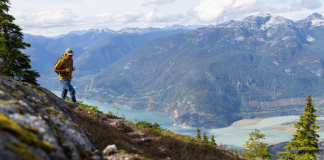The U.S. Forest Service has proposed a set of rules that would strictly limit commercial filming and photography in federal wilderness areas. The move would bar any media companies, commercial outfitters, retailers, brands, nonprofit groups and even, potentially, members of the general public, from using imagery of the 36 million acres of wilderness area managed by the Forest Service for commercial gain or to seek to raise funds.
The directive has been on the books for 48 months but hasn’t been enforced. The Forest Service says rules are meant to preserve the “untamed” character of wilderness areas.
The proposed rules would require newspaper photographers, television producers or filmmakers to obtain a special use permit before entering a wilderness area — unless they were covering “breaking news.” A Forest Service supervisor would then determine whether the story has merit under the criteria of the directive. The special use permit would cost upwards of $1,500 and bring a $1,000 fine to anyone caught breaking the rule. A permit also could be denied, which some say could raise First Amendment concerns or the problem of prospect of journalists being denied access to a wilderness area because a government agency didn’t approve of a story idea.
“The Wilderness Act pretty clearly prohibits commercial enterprise in wilderness areas,” said Liz Close, Acting Director of Wilderness for the U.S. Forest Service.
According to the proposed rules, permits for filming and photography in wilderness areas will be awarded only when there is “a primary objective of dissemination of information about the use and enjoyment of wilderness or its ecological, geological, or other features of scientific, educational, scenic, or historical value.”
According to Rep. Peter DeFazio (D-OR), the proposed rule is “vague and could have a major impact on the way the media captures, documents, and promotes our public lands.”
“Members of the press should be allowed to access and photograph these public lands, without a dictate on how they use the footage from bureaucrats in Washington, DC,” read a statement from DeFazio.
Public comment is invited and will be considered in the development of the final directive. Comments must be received in writing on or before November 3, 2014 to be assured of consideration.







